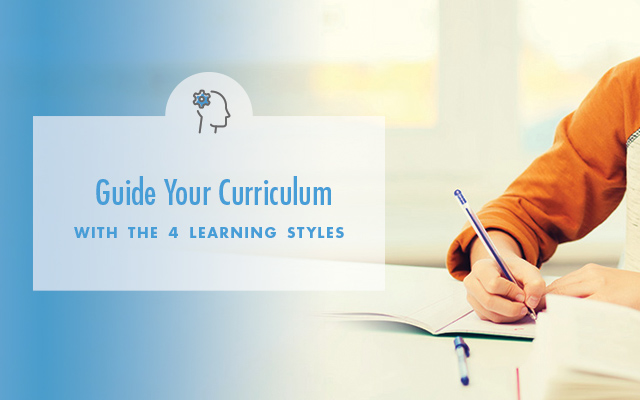Guide Your Curriculum With The 4 Learning Styles


Recently, Heather Eberlin shared her story about adjusting her teaching method to match her son’s preference for a different learning style. Eberlin’s story of not staying married to your teaching style and curriculum is an important lesson that many homeschooling parents have to learn over time. To help our children grow to love learning, there is a lot homeschooling parents can do to help work with their preferred learning style, or modality.
What Are The 4 Learning Styles?
According to the VARK model, a model created by New Zealand teacher Neil Fleming, there are 4 main learning modalities:
● Visual learners
● Auditory learners
● Read and write learners
● Kinesthetic learners
The names of these styles is where the “VARK model” name comes from. People also add multimodal learning to the list since children may prefer different modalities for different subjects. There is no right or wrong learning style, but understanding your child’s preferred learning style may help you develop new teaching methods and connect your child with a new subject sooner.
Visual Learner Teaching & Study Methods
People typically think that visual learners want to look at pictures and videos to learn, but they actually respond very well to meaningful flowcharts and diagrams. These children will often doodle as they take notes to help create visual relationships between concepts. For teaching and study sessions, consider keeping colored pencils and markers around so your child can create impactful visual cues and color code information in their notes to help them recall information. Teach them how to draw mind maps and other charts in their notebooks. When teaching, use a whiteboard to demonstrate these visual concepts too. A whiteboard is great for teaching, studying, and study breaks to draw freely!
Auditory Learner Teaching & Study Methods
Auditory learners are students who like to listen to lectures and then participate in discussion about their work. Do you ever hear your child muttering to herself as she works through her homework? This is often an indicator that your child may be an auditory learner. To help them understand new concepts, ask them to read out loud, ask questions, and discuss their process as they go through their work. Sometimes she may just need a sounding board to work through learning something new. If concepts are proving to be difficult, use word associations and create rhymes to help reinforce the new subject matter.
Read & Write Learner Teaching & Study Methods
Read and write learners love to do both activities – learning by reading and writing. This learning style is what traditional classrooms are based on. To study, encourage your child to take notes, seek supplemental reading content, reread and rewrite their notes. If they have to read a few chapters of a textbook, ask them to write a summary after each chapter of the important information they learned. This child simply needs a lot of paper and pencils for note taking and an active library card or internet access to continue to read information from other sources.
Kinesthetic Learner Teaching & Study Methods
If you find that your child often speaks with their hands and loves to learning by doing, they are most likely a kinesthetic learner. The best way to help this type of child is to make learning a physical activity. Ask them to act out and build concepts with craft materials – try out these 3 LEGO activities to build soft skills. Because kinesthetic learners can get bored by textbooks and note-taking easily, consider adding homeschool-friendly, educational videos to your curriculum to offer a way to make learning new concepts entertaining and easy-to-digest. Another way to interest your kinesthetic learner is to incorporate lab work as often as possible.
Have you adapted your teaching methods to fit your child’s learning style recently? Share your story with us!










































